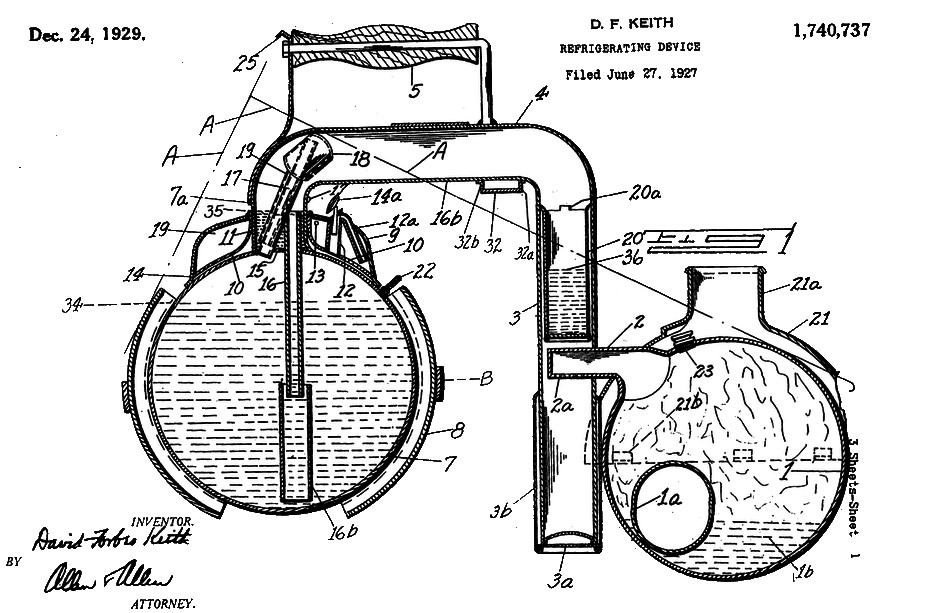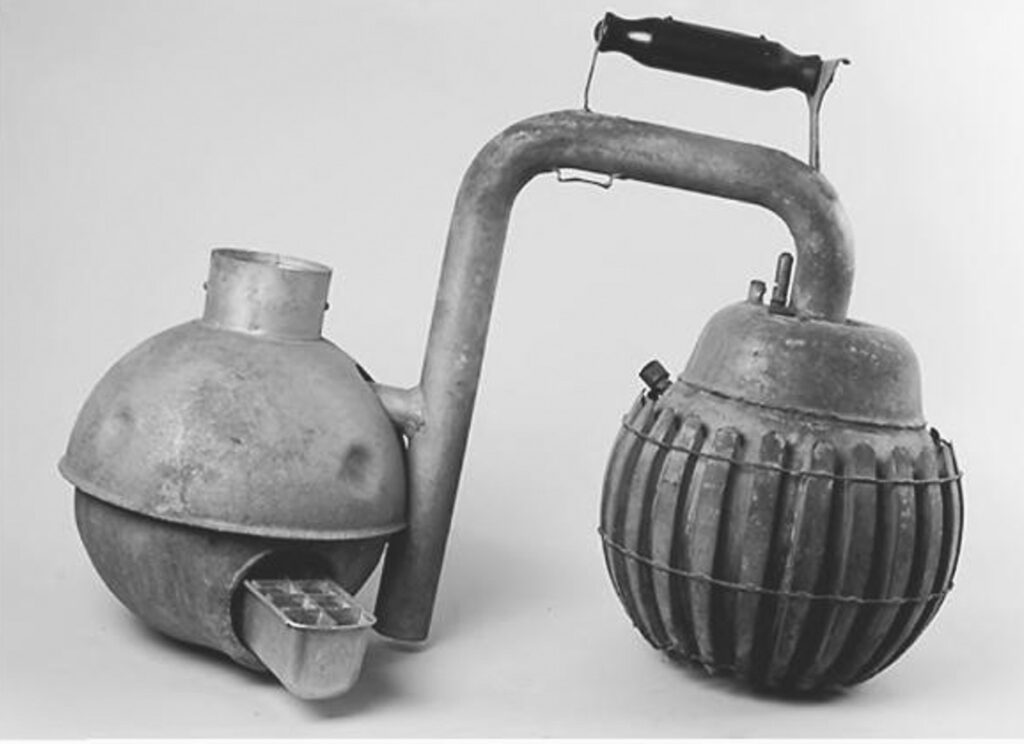Crosley Radio Company’s kerosene-heated refrigeration appliance for rural America.
Only three percent of U.S. farms had electricity in 1925, according to the Smithsonian Institution’s National Museum of American History in Washington, D.C.
For most of rural America in the early 20th century, kerosene lamps extended the day. On some farms, battery-powered radios brought news and entertainment at night.
By 1927, Crosley Radio Company reported sales of $18 million — making it the largest radio manufacturer in the world.
Crosley radios were marketing with the slogan, “You’re There With A Crosley.” Founded in the early 1920s by Powel Crosley Jr., the Cincinnati-based corporation became known for innovative engineering.

Production of Crosley Radio’s Icy Ball refrigerator began in 1928, and the Icy Ball sold for about $80, complete with a 4.25 cubic foot cabinet.
Crosley, sometimes called “The Henry Ford of Radio,” would expand the company into manufacturing automobiles, aircraft, and home appliances.
He also recognized a lucrative market awaited in the millions of farm homes lacking electricity, not just for radio, but for his company’s first venture into refrigeration.
Crosley Icy Ball — Heated Refrigeration
Built on earlier patents developed for absorption refrigeration and assigned to Crosley, the radio company began production of a new appliance, promoting the device’s simplicity, durability, and economy.
With no moving parts, the Crosley Icy Ball (or Icyball) was designed to chill by using intermittent heat absorption with a water ammonia mixture as the refrigerant.
Once “charged” by heating for 90 minutes with a cup of kerosene, an Icy Ball could provide a day or more of refrigeration, plus a few ice cubes. No electricity required.

Crosley Radio Corporation bought the rights to the “icy ball” refrigeration idea from David Keith of Canada, who had applied for a U.S. patent in June 1927.
Crosley Radio’s new refrigerating appliance was simple to operate, much like Standard Oil’s “Perfection” stove and similar kerosene stoves, along with the Monitor Sad Iron Company’s popular gasoline iron.
“Especially for women in rural and farm households, kerosene provided an important bridge fuel to the newer age of gas and electricity. To ignore it is to ignore what was for many an important introduction to modern times,” explained Mark Aldrich in Agricultural History Journal, Winter 2020, “The Rise and Decline of the Kerosene Kitchen.”

Heated with a kerosene stove, the Crosley icy ball chilled by using intermittent heat absorption with a water ammonia mixture as the refrigerant.
Crosley Radio’s instructions for the “Icyball Refrigerator” stated, “The Perfection kerosene stove has been designed especially for the Icyball and is recommended.”
Production of the Crosley Icy Ball began in 1928, and it sold for about $80, complete with a 4.25 cubic foot cabinet. Crosley Radio declared sales of 22,000 for the refrigeration appliance in the first year alone.
“Refrigeration – everyday necessity to household economy and family health – is possible now WITHOUT ELECTRICITY – at a cost so low that about 2 cents a day covers it everywhere,” proclaimed company advertisements.
Rural Electrification Act
The New Deal’s Rural Electrification Act of 1936 empowered the federal government to make low-cost loans to farmers bringing electricity to rural America.
Among the most successful of President Franklin Roosevelt’s programs, the loans allowed thousands of farms to exploit the labor savings that electric lights, tools, and appliances could bring. Electrification grew from only 3.2 percent in 1925, to 90 percent by 1950.
Crosley adapted to the electrified market and made an even bigger hit with its 1933 refrigerator, the “Shelvador” Model D-35, which featured the unheard of innovation of door shelving and automatic interior lighting within its three and a half cubic feet. More electric appliances followed, and for decades the company remained preeminent in refrigerators.
Electrification of rural America rendered Crosley Icy Balls obsolete and production ended in 1938, but Crosley Radio endured.
Smithsonian Icy Ball Exhibit
Powel Crosley Jr. bought the rights to the icy ball refrigeration design from David Keith of Toronto, Ontario, Canada, who had applied for a patent in June 1927 and received it on December 24, 1929 (No. 1,740,737). Crosley Radio improved the device while acquiring additional patents.

Crosley Radio Corporation sold thousands of Icy Ball refrigeration appliances (with ice maker) before production ended in 1938.
Although not on display, a Crosley Icy Ball has been preserved at the Smithsonian’s National Museum of American History. Refrigeration artifact (No. 1988.0609.01) was tested in 1998 and successfully completed a heat charge cycle, producing a temperature of 18 degrees Fahrenheit.
_______________________
The American Oil & Gas Historical Society (AOGHS) preserves U.S. petroleum history. Become an AOGHS annual supporting member and help maintain this energy education website and expand historical research. For more information, contact bawells@aoghs.org. Copyright © 2023 Bruce A. Wells. All rights reserved.
Citation Information – Article Title: “Crosley Icy Ball Refrigerator.” Authors: B.A. Wells and K.L. Wells. Website Name: American Oil & Gas Historical Society. URL: https://aoghs.org/oil-almanac/crosley-icy-ball-refrigerator. Last Updated: October 14, 2023. Original Published Date: October 14, 2023.


